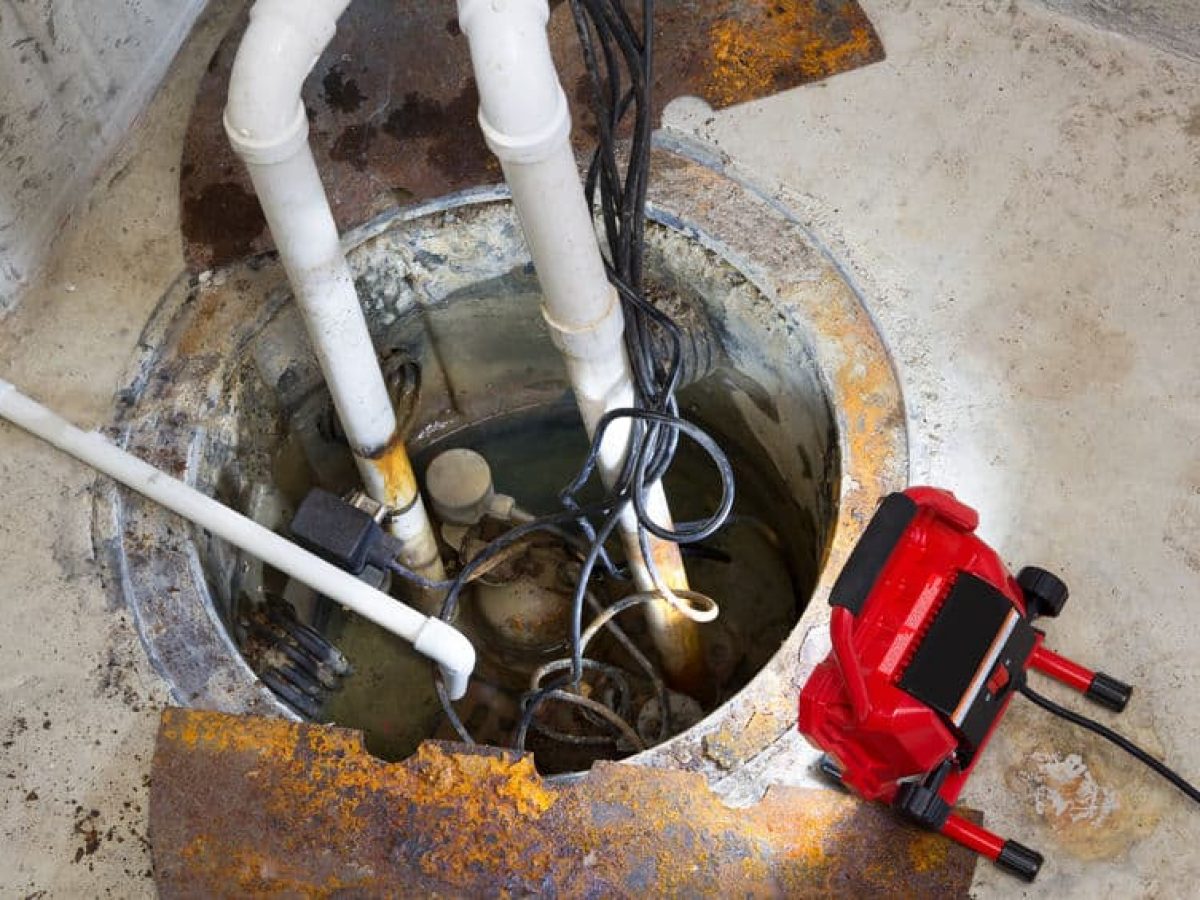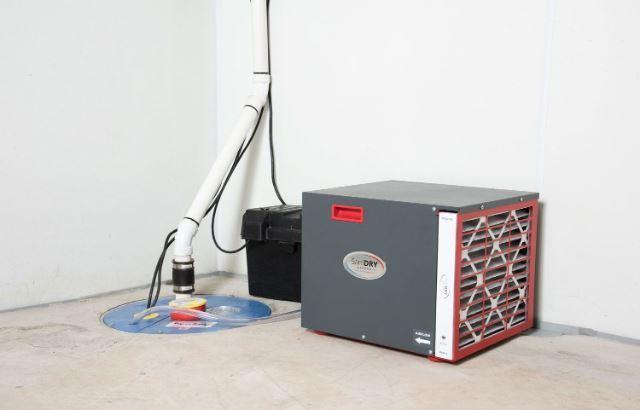The Guide to Thoroughly Maintaining a Sump Pump
The Guide to Thoroughly Maintaining a Sump Pump
Blog Article
On this page further down you can locate lots of very good tips in regards to Steps to Cleaning Your Sump Pump Properly.

Sump pumps are important parts in several homes, especially in areas prone to flooding or extreme wetness. They assist stop water damages by efficiently getting rid of excess water from basements or crawl spaces. However, like any other appliance, sump pumps require regular maintenance to ensure they function successfully when required one of the most. Cleansing your sump pump is an important part of its upkeep, and comprehending how to do it effectively can save you from expensive fixings and possible calamities.
Intro
Preserving a clean sump pump is essential for its appropriate performance and durability. Ignoring this necessary task can lead to obstructions, breakdowns, and ultimately, water damages to your property. Consequently, discovering how to clean up a sump pump is essential for home owners who rely upon these devices to maintain their basements dry and safeguarded.
Signs of a Dirty Sump Pump
Understanding when your sump pump requires cleaning is vital for preventing prospective breakdowns. Some usual signs that suggest a filthy sump pump consist of strange noises during operation, lowered water circulation, and noticeable particles in the pit. If you see any one of these signs and symptoms, it's essential to cleanse your sump pump promptly to stay clear of any kind of more concerns.
Getting ready for Cleansing
Before you begin cleansing your sump pump, it's vital to take some safety and security preventative measures. Beginning by turning off the power to the pump to avoid any kind of electric mishaps. Additionally, put on suitable protective equipment, such as handwear covers and safety glasses, to protect on your own from dust, particles, and potential microorganisms.
Recognizing the Sump Pump
Before diving into the cleaning procedure, it's vital to have a standard understanding of exactly how a sump pump works. Generally installed in a pit or basin listed below the basement floor, a sump pump contains numerous crucial elements, including a pump, a float button, and a discharge pipeline. When water accumulates in the pit, the float switch turns on the pump, which after that pumps the water out through the discharge pipeline, far from the building's foundation.
Detailed Overview to Cleaning a Sump Pump
Turning off the Power
Begin by separating the power supply to the sump pump to prevent any type of mishaps while cleansing.
Looking For Correct Functioning
Before reinstalling the pump, carry out a quick test to guarantee that the float switch triggers the pump properly. Pour some water into the sump pit and observe the pump's operation. If everything is functioning correctly, you can reassemble the pump and reconnect the power supply.
Removing Particles and Dust
Utilize a bucket or a scoop to get rid of any type of visible debris, dust, or sediment from the sump pit. Dispose of the particles effectively to avoid it from clogging the pump or the discharge pipe.
Cleaning the Pump and Drift Switch
When the pit is clear of particles, thoroughly get rid of the pump from the pit. Check the pump and the float button for any type of indicators of damage or wear. Make use of a soft brush or cloth to cleanse the surfaces and eliminate any kind of built up crud.
Flushing the System
After cleaning the pump and float button, flush the sump pit with tidy water to remove any type of staying dirt or debris. This will assist make certain that the pump operates smoothly and effectively.
Upkeep Tips to Maintain Your Sump Pump Clean
In addition to periodic cleaning, there are several upkeep ideas you can follow to maintain your sump pump in ideal condition:
Verdict
Cleaning your sump pump is an essential facet of its maintenance and makes sure that it runs efficiently when you require it one of the most. By adhering to the steps detailed in this overview and incorporating routine upkeep right into your regimen, you can expand the lifespan of your sump pump and safeguard your home from water damages.
6 STEPS ON HOW TO CLEAN A SUMP PUMP PROPERLY
UNDERSTANDING SUMP PUMPS
Your sump pump plays a crucial role in protecting your home by managing and removing excess water. It primarily functions as a “shield”, guarding your basement against the damaging effects of water accumulation. The pump is housed in a sump pit in the lowest part of your basement, and its job is to pump out any water that collects there.
During heavy rainfalls or when snow melts rapidly, water can infiltrate your basement, posing potential risks like flooding, structural damage, and harmful mold growth. Here, the sump pump springs into action, pumping out the intruding water and directing it away from your home.
SAFETY FIRST
Before cleaning, remember to prioritize safety. Disconnect the sump pump from the power source to prevent any accidental electric shocks. Also, wear sturdy gloves to protect your hands from any sharp or dirty components within the pump.
REMOVE THE SUMP PUMP
After ensuring your safety, the next step is to remove the sump pump from its pit. Doing this might require careful maneuvering as you don’t want to damage any pump components. Once removed, clean the sump pit to remove any accumulated debris or sludge.
INSPECT THE PUMP
Inspect the pump for any visible signs of wear or damage. Check the power cord, float switch, and impeller housing. If any components look worn out or damaged, consider replacing them to ensure optimal performance.
CLEAN THE PUMP
Thoroughly clean the pump with warm, soapy water. Make sure to rid it of any dirt, gravel, or other debris that might impede its performance. You can use a toothbrush to clean the small, hard-to-reach parts of the pump.
REINSTALL THE SUMP PUMP
Reinstall the pump into the sump pit Make sure it’s positioned correctly to remove the water effectively Once it’s back in place, reconnect it to the power source TEST THE PUMP
Finally, pour some water into the pit to ensure the pump works correctly. It should start automatically and begin pumping out the water; if it doesn’t, check the power source and the positioning of the pump.
Remember, while cleaning your sump pump is an essential part of home maintenance, hiring a professional plumber for a thorough inspection and cleaning at least once a year is also important. This will ensure that your pump is in optimal condition, ready to protect your home from potential water damage.
BEST PRACTICES FOR CLEANING SUMP PUMP DISCHARGE PIPES
Regular Inspection: Regularly inspect your discharge pipes, especially during heavy rainfall or snowmelt periods. Look for any signs of blockage or damage. Early detection of problems can prevent serious issues down the line. Periodic Cleaning: Over time, sediment and debris can accumulate in the discharge pipes, impeding the flow of water. Regular cleaning helps keep the pipes clear and functioning efficiently. You can use a high-pressure water jet to effectively clean the pipes. Insulation During Winter: In colder climates, discharge pipes can freeze, blocking the outflow of water. Protect your discharge pipes from freezing temperatures by insulating them with foam pipe insulation. This will ensure the sump pump can continue to discharge water even in freezing conditions. Proper Positioning: The discharge pipe should be positioned to direct water away from your home’s foundation. Improper positioning can lead to water seeping back into the basement. Ensure the pipe is long enough and angled correctly. Installation of a Check Valve: A check valve prevents water from flowing back into your sump pit after the pump has pushed it out. Installing a check valve helps maintain the efficiency of your sump pump and reduces the risk of flooding. Minimize Pipe Turns: Every curve or turn in the discharge pipe can decrease the efficiency of water flow. By minimizing turns and bends in your discharge pipe, you can increase the efficiency of your sump pump. https://www.fullspeedplumbing.com/how-to-clean-a-sump-pump-properly9999/

As a passionate reader on Keep Your Sump Pump Clean, It'll Keep You Dry, I assumed sharing that excerpt was a smart idea. Loved our entry? Please share it. Help others check it out. Many thanks for your time. Come back soon.
Visit Site Report this page